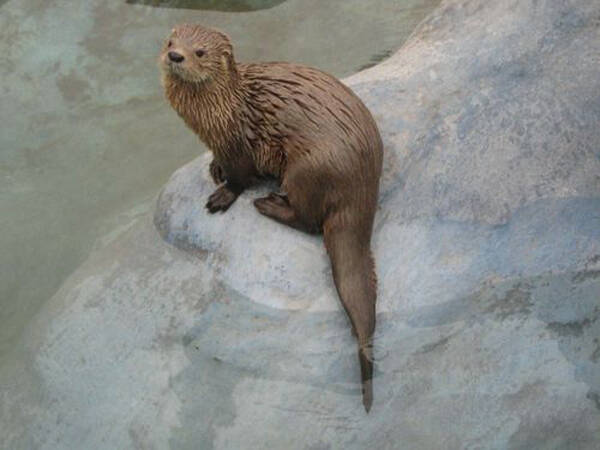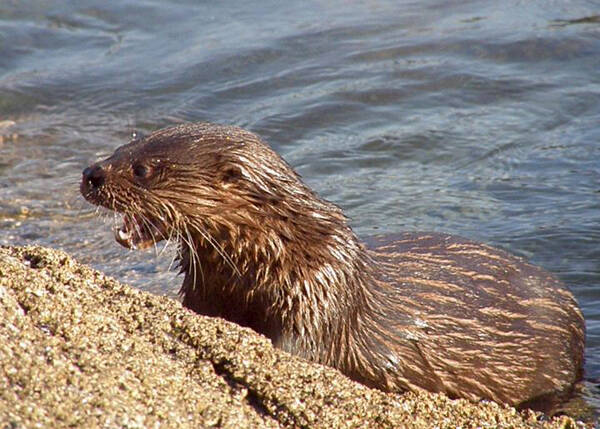Lontra felina
IUCN
LCBasic Information
Scientific classification
- name:Lontra felina
- Scientific Name:Lontra felina,chungungo、Marine Otter,Cat
- Outline:Carnivora
- Family:Spinopoda Mustelidae Lurinae A.Otter
Vital signs
- length:About 55 cm
- Weight:3-5kg
- lifetime:No verification information
Feature
It is the only otter species that lives only in the ocean.
Distribution and Habitat
The Peruvian otter is found along the eastern Pacific coast, primarily in the intertidal areas of southern Peru, along the entire coast of Chile, and in the southernmost tip of Argentina.
The Peruvian otter is the only otter species that is exclusively found in marine habitats. Generally, otters live in areas with strong winds, rough seas, and a rich variety of rocky fish, mollusks, and crustaceans. The Peruvian otter prefers to live in areas with rocky outcrops (often with burrows above the water and tunnels connecting land and water). The species spends most of its time in the water, but also prefers rocky coastal areas, especially during the breeding season.
Appearance
The Peruvian otter is a small animal, weighing about 3-5 kg. The length from head to tail is about one meter, and the length from head to anus is about 550 mm. At 570 mm, its tail is 300-350 mm. It comes out of a wide body and thins towards the end, all covered with hair, which it rests on the rocks, allowing it to maneuver and increase its underwater speed. The color of the body is dark brown in the upper part, gradually becoming lighter towards the ventral side. Different when wet, its hair is reddish brown when dry. It also has medium hair, which is sparser and fluffy, which does not come into contact with water and acts as an insulator, allowing it to maintain its temperature in the cold water of the ocean. Its legs have strong claws to grip smooth rocks, as well as to fix and catch prey, groom and clean the skin; its leg palms are composed of smooth black leather callouses, and the back is covered with hair, with finger-like membranes for efficient propulsion. Its front legs are s
Details
Peruvian Otter (scientific name: Lontra felina) is also known as chungungo and Marine Otter. There are no subspecies.

When not breeding, Peruvian otters are mostly solitary animals. When found in groups, the group size rarely exceeds 2-3 individuals. Activity is usually diurnal, with peak activity occurring in the early morning, afternoon, and evening. Otters are much more agile in the water than on land. However, they have proven to be excellent rock climbers.
When moving through the water, they submerge their bodies, leaving only their heads and parts of their backs exposed. When searching for prey, Peruvian otters can dive to depths of 30-40 meters. Often, Peruvian otters can be seen floating on their backs, using their tails to maintain direction. This allows Peruvian otters to devour prey even in large waves. Peruvian otters often climb out of the water onto rocky shores to forage, sunbathe, groom, and play.
Most interactions between Peruvian otters are friendly; however, adults and pairs of Peruvian otters can be highly aggressive when competing for resources, such as captured prey. These intense matches often involve active fighting and biting, bloody wounds, and high-pitched screams.
The Peruvian otter's diet consists primarily of invertebrates (including crustaceans and mollusks), fish, and occasionally birds and small mammals. Fruit is also consumed regularly. Peruvian otters spend 63-70% of their time hunting prey.

When the Peruvian otter begins its immersive luring action, its legs cling to the structure of its fusiform body, propelling itself from head to tail in a wave-like manner, greatly increasing its speed. Its skeletal structure can twist and turn. Its front legs are very dexterous and powerful, and supported by strong teeth, it is able to tear prey in an even manner by swimming on its back.
Peruvian otters are likely a monogamous species. Mating usually occurs in December or January. Birthing usually occurs in January-March after a gestation period of 60-65 days. Births occur in caves or on the shore between rocky outcrops and vegetation. The size of the pups ranges from 2-4, with 2 being the most common. Juvenile Peruvian otters stay with their parents for about 10 months. Adult Peruvian otters hold their pups in their mouths or carry them on their bellies while swimming with them on their backs. Both adults in a monogamous pair will bring prey back to the den to feed the pups. During the mating season, they follow and chase each other for long periods of time between water, algae, and rocks, constantly shuttling in and out of each other, making loud screams that can be heard from a distance.
Peruvian otters are often illegally captured and killed for their fur, which is used to make footwear, especially boots. Peruvian otters are also sometimes trained, domesticated, and used by fishermen. Young Peruvian otters are easily bottle-fed, and adults seem to adapt well to freshwater ponds and other livestock food.
Listed on the IUCN Red List of Threatened Species (IUCN 2014 ver 3.1) - Endangered (EN).
Listed on the Convention on International Trade in Endangered Species of Wild Fauna and Flora (CITES Novak 1991) - Appendix I.
Listed in Appendix I of the Bonn Convention (Convention on the Conservation of Migratory Species of Wild Animals) (CMS).
Listed in Appendix I, Appendix II and Appendix III of the Convention on International Trade in Endangered Species of Wild Fauna and Flora (CITES) 2019 Edition.
Protect wildlife and eliminate game.
Maintaining ecological balance is everyone's responsibility!








